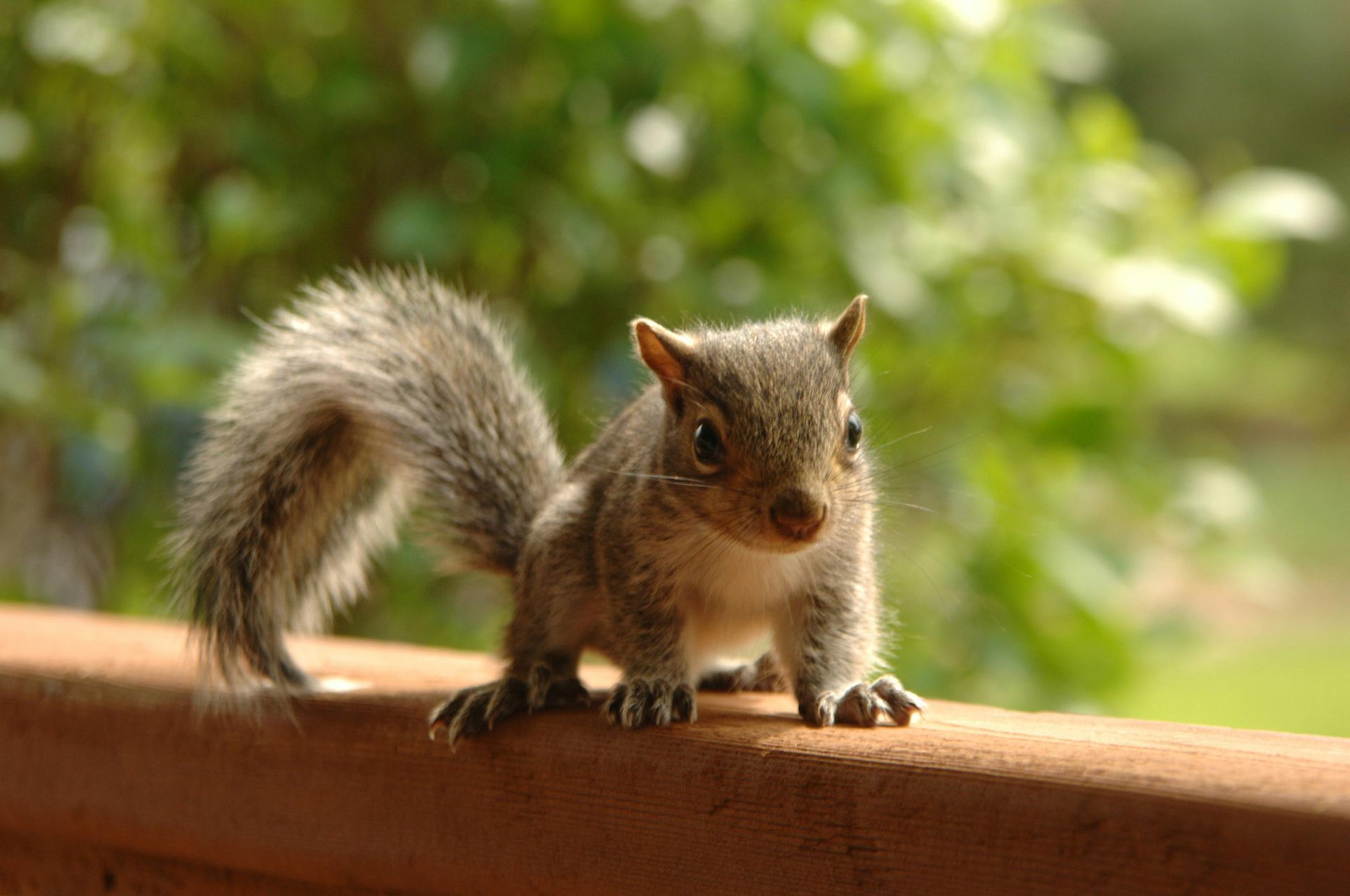Making Sure Your Home Is Safe from Backyard Fires: A Guide for Capital District Homeowners
Pest Control, Wildlife Exclusion Services, Residential/Commercial Construction, Mold Restoration and Fire & Water Damage Repair
As the warm days of spring and summer roll into the Capital District, there’s nothing quite like gathering around a backyard fire pit to enjoy the evening with family and friends. Whether you're roasting marshmallows, sharing stories, or simply soaking in the ambiance, a fire pit can transform your outdoor space into a cozy haven.

However, with the joy of outdoor fires comes a serious responsibility: ensuring your home and loved ones are safe from the risks they pose. At Accurate Pest Control in the Capital District, we’re not just experts in keeping pests at bay—we’re also committed to helping our community stay safe in every aspect of homeownership, including fire safety. In this comprehensive guide, we’ll walk you through practical steps to protect your home from backyard fires, with a special focus on how pest control and construction practices play a role in fire prevention.
The Risks of Backyard Fires in the Capital District
The Capital District, with its mix of suburban neighborhoods and proximity to wooded areas, faces unique fire risks. According to the New York State Department of Environmental Conservation (NYSDEC), open burning is the leading cause of wildfires in the state, and since the spring burn ban was implemented in 2009, wildfire incidents have decreased by over 40%. However, the risk remains, especially during dry, windy conditions common in spring and early summer. The annual burn ban, in effect until May 14th, prohibits most open fires, including burning brush, to reduce wildfire risks.
Backyard fires, even when contained in a fire pit, can pose significant dangers if not managed properly. A stray ember, a gust of wind, or an unattended fire can quickly escalate into a disaster, threatening your home, property, and even your neighbors. Additionally, the Capital District’s climate, with its warm summers and occasional droughts, can create dry conditions that make fires more likely to spread. As a pest control and construction-focused company, Accurate Pest Control understands that fire safety isn’t just about the fire itself—it’s also about the environment around it, including how pests and construction materials can contribute to or mitigate risks.
Step 1: Design and Install a Safe Fire Pit
The foundation of backyard fire safety starts with the fire pit itself. A poorly designed or improperly installed fire pit can increase the risk of accidental fires. Here’s how to get it right:
Choose the Right Location
- Keep Distance: Place your fire pit at least 15 feet away from your home, sheds, fences, or any other structures. This distance also applies to overhanging branches, decks, and other combustibles. In the Capital District, local fire safety codes align with this recommendation, so always check with your local fire department to ensure compliance.
- Clear the Area: Surround the fire pit with a non-flammable barrier like gravel or sand to contain stray embers. Avoid placing the fire pit on a wooden deck unless it’s elevated and surrounded by fire-resistant materials.
Use Fire-Safe Materials
- Construction Matters: Build your fire pit with heat-resistant materials such as stone, brick, or metal. Avoid using wooden structures, as they can easily catch fire. For Capital District homeowners with traditional brick homes, a brick fire pit can complement your property’s aesthetic while ensuring safety.
- Pest-Resistant Materials: At Accurate Pest Control, we often see pests like termites and carpenter ants attracted to wooden structures. If you’re using wood in your backyard setup (like for a nearby pergola or deck), ensure it’s treated to resist pests, as damaged wood can become a fire hazard if it dries out and becomes brittle.
Consider Fuel Type
- Seasoned Wood Only: Burn only seasoned hardwoods like oak or maple, which produce less smoke and fewer sparks than softwoods like pine. Never burn trash, plastics, or treated wood, as these release toxic fumes and increase fire hazards.
- Avoid Accelerants: Never use gasoline, kerosene, or lighter fluid to start or maintain your fire. These can cause uncontrollable flare-ups.
Step 2: Maintain a Firewise Yard
A fire-safe backyard goes beyond the fire pit itself—it’s about creating an environment that reduces fire risks. The Firewise Communities program, supported by the NYSDEC, emphasizes the importance of maintaining a “lean, clean, and green” yard within 30 feet of your home. Here’s how to apply these principles in the Capital District:
Keep Your Yard Lean and Clean
- Remove Flammable Debris: Clear dead leaves, pine needles, and branches from your yard, especially within 10 feet of your home and under decks or porches. These materials can act as fuel for a fire.
- Pest Control Connection: Pests like rodents often nest in debris piles, which can become fire hazards. At Accurate Pest Control, we recommend regular yard inspections to identify and remove rodent nests, reducing both pest and fire risks.
- Store Flammables Safely: Keep firewood, propane tanks, and other flammable materials at least 30 feet away from your home and fire pit. Store patio cushions indoors during periods of high fire danger.
Choose Low-Flammability Plants
- Plant Wisely: Within 30 feet of your home, use low-growing plants free of resins, oils, and waxes that burn easily. Consult with a local landscape specialist for a list of fire-resistant plants suitable for the Capital District’s climate.
- Space Vegetation: Keep flammable conifer trees widely separated—about 30 feet between crowns—to prevent crown fires. Prune trees so the lowest limbs are at least 6 to 10 feet off the ground, reducing the risk of fire spreading.
Pest Control and Vegetation Management
- Weed Control: Overgrown weeds and vegetation can attract pests like mice and rats while also providing fuel for fires. Accurate Pest Control offers vegetation management services to keep your yard free of unwanted plants that could contribute to fire risks.
- Rodent Prevention: Rodents can chew through wiring or insulation, creating fire hazards. Seal entry points around your home and use rodent-resistant materials like wire mesh around vents and soffits. Our team at Accurate Pest Control can help with rodent-proofing to protect your property.
Step 3: Practice Safe Fire Management
Even with a well-designed fire pit and a Firewise yard, safe fire management is crucial to prevent accidents. Follow these best practices:
Monitor the Fire at All Times
- Stay Vigilant: Never leave a fire unattended. Designate someone to monitor the flames at all times, especially when children or pets are present.
- Keep Tools Handy: Have a shovel, fire extinguisher, bucket of water, or hose nearby to extinguish the fire quickly if needed.
Manage Smoke and Embers
- Position Seating Strategically: Arrange seating so smoke blows away from guests. Stir the fire gently to promote even burning and reduce excessive smoke.
- Protect Vulnerable Groups: Smoke can irritate lungs and trigger health issues like asthma. Keep children, pets, and those with respiratory conditions at a safe distance.
Extinguish the Fire Properly
- Burn Down Safely: Allow the fire to burn down to ashes before extinguishing it. Pour water over the ashes until all hissing stops, stirring with a stick to ensure all embers are out.
- Check for Embers: Before leaving the area, double-check that no embers remain. A single spark can reignite and cause a fire.
Step 4: Prepare for Emergencies
Being prepared for a fire emergency can make all the difference. Here’s how to stay ready in the Capital District:
Create a Fire Escape Plan
- Plan Two Exits: Ensure every room in your home has two escape routes in case a fire blocks the primary exit. Practice this plan with your family at least twice a year.
- Stay Low: Teach everyone to stay low to the floor during a fire, where the air is safer. If clothes catch fire, remember to stop, drop, and roll.
Install and Maintain Smoke Alarms
- Strategic Placement: Install smoke alarms on every level of your home, including the basement, outside sleeping areas, and inside bedrooms. Test them monthly and replace them every 10 years.
- Clean Regularly: Gently vacuum smoke alarms to keep them free of dust, which can impair their function.
Know Local Regulations
- Burn Ban Awareness: In the Capital District, the statewide burn ban from March 16 to May 14 prohibits burning brush and other materials. Check the NYSDEC fire danger map before lighting any fire, and avoid burning on windy days.
- Report Violations: If you see a neighbor burning in violation of local laws, report it to your local fire department. As seen in recent discussions in nearby communities, authorities take fire risks seriously, especially during dry conditions.
Step 5: Address Construction-Related Fire Risks
As a company with expertise in the construction industry, Accurate Pest Control understands how construction practices can impact fire safety. Here’s how to ensure your home’s construction doesn’t contribute to fire risks:
Inspect and Maintain Electrical Systems
- Avoid Overloading Outlets: Plug only one high-wattage appliance into an outlet at a time. Use plastic safety covers on unused outlets to prevent children from accessing them.
- Pest-Related Wiring Damage: Rodents can chew through electrical wiring, creating fire hazards. Regular pest control inspections from Accurate Pest Control can identify and address rodent activity before it becomes a problem.
Use Fire-Resistant Materials
- During Renovations: If you’re renovating your Capital District home, opt for fire-resistant materials like treated wood or metal for decks and fences. Seal fresh wood with paint or sealant to deter pests and reduce flammability.
- Pest Management During Construction: Construction sites can attract pests like termites and carpenter ants, which can damage wood and increase fire risks. Partner with Accurate Pest Control to implement pest management strategies during and after construction.
Check HVAC Systems
- Prevent Pest Entry: Ensure HVAC vents are covered with mesh to keep pests out. Pests can nest in ductwork, creating fire hazards if their nests are made of flammable materials.
- Regular Servicing: Have your HVAC system inspected annually to ensure it’s not a fire risk due to dust buildup or pest activity.
How Accurate Pest Control Can Help
At Accurate Pest Control in the Capital District, we’re more than just a pest control company—we’re your partners in creating a safe, pest-free, and fire-safe home. Here’s how we can assist:
- Rodent-Proofing Services: We’ll inspect your home for rodent entry points, seal them with pest-resistant materials, and set traps to eliminate any existing infestations. This reduces the risk of rodents chewing through wiring or nesting in flammable debris.
- Vegetation Management: Our team can remove weeds and unwanted plants that attract pests and contribute to fire risks, keeping your yard Firewise.
- Construction Site Pest Control: If you’re building or renovating, we’ll help protect your site from pests like termites and carpenter ants, which can damage wood and create fire hazards.
- Educational Support: We provide guidance on maintaining a pest-free and fire-safe yard, empowering you to take proactive steps year-round.
Conclusion: Stay Safe and Enjoy Your Backyard
A backyard fire pit can be a wonderful addition to your Capital District home, offering warmth, ambiance, and countless memories. But safety must always come first. By designing a safe fire pit, maintaining a Firewise yard, practicing proper fire management, preparing for emergencies, and addressing construction-related risks, you can enjoy your outdoor fires with peace of mind. At Accurate Pest Control, we’re here to support you every step of the way, from keeping pests at bay to ensuring your yard is free of fire hazards. Together, we can make your home a safe haven for you and your loved ones.
Ready to take the next step in fire safety? Contact Accurate Pest Control in the Capital District today for a comprehensive pest control and fire safety inspection. Let’s work together to protect your home from pests and fires, so you can enjoy your backyard to the fullest. Call us at 518-374-0357 or visit our website at accuratepestcontrolny.com to schedule your appointment now!





